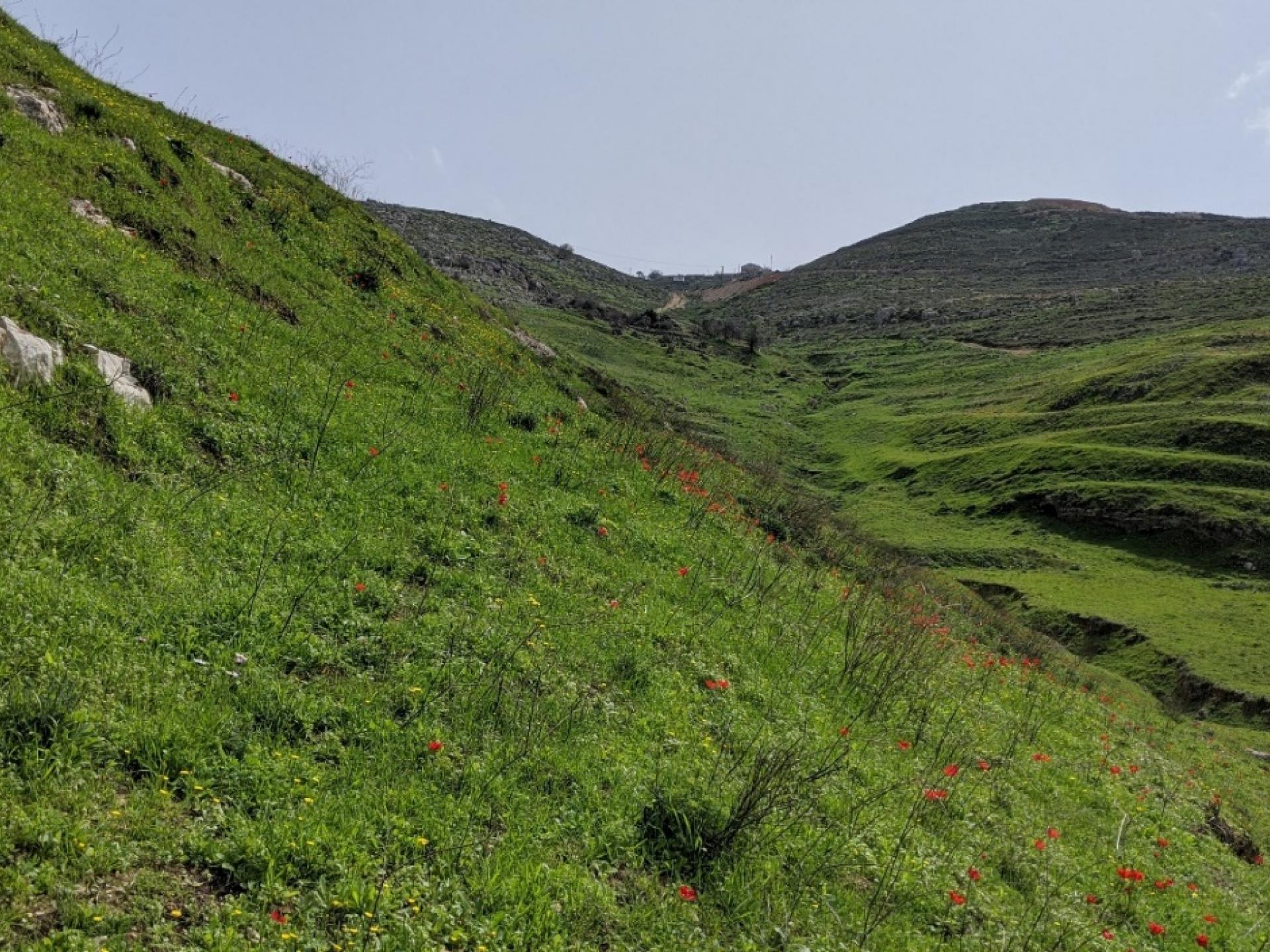Burin - Maqams under occupation
We arrived at Burin, to Doha and Samir Asus’s family home that is being renovated, to bring them some booklets, translated into Arabic, about the Palestinian caged-in holy sites, maqams. A review of these sites around Burin relies on the couple’s testimonies as well. From the joyous reception of the printed material, we proceeded to the problem of the springs stolen by Yitzhar colony and the spring Ein Mahna that has been stolen by three colonies together: Itamar, Beracha, and the colonist outpost Sneh Yaacov.
Doha, who in the past dared to come with us to Maqam Abu Ismail and to the spring Ein Mahna below, backed off this time for fear of the colonists from the outpost Sneh Yaacov. That is why the alternative route we chose together was to view at least from afar the springs of Bourin and Madama that have been taken over by Yitzhar.
We came as close as our safety required, and the distance, as you see in the photos – was great. Because of the distance, what the photos show is basically beautiful lush landscape, and invisible springs that are now out of bounds for Palestinians.
A villager of Madama who saw us joined and said that his 15-year-old daughter who went out to pick herbs not far from home was shot in her arm and arrested for 2 months.
Maqams under occupation
This very short report, coming out rather late, gives us a chance to ask more poignantly: how can we present the subject of the Maqams to the public on tour, on the basis of our study, which we named ‘Israel’s Takeover of Palestinian Sacred and Heritage Sites
A reminder about tradition: the Palestinians used to come on pilgrimages to these hilltop sites in various contexts – from celebrations of spring, through family events, prayers, requests for rain or for offspring, for health, meeting inhabitants of other villages, spending time alone in nature, through plain family recreation on the hilltops in view of the marvelous landscape.
This tradition was erased as the colonies were established on the hilltops, in the following order: 1. Takeover of the hilltop with its Maqam in order to erect an army base and declare it a ‘closed military zone’. 2. Transferring it to be controlled and resided by citizens of Israel. 3. Takeover of the springs at the foothills. 4. Erecting colonist outposts and taking over additional lands. 5. Damaging Palestinians in their homes and fields.
Yitzhar took over three of Burin’s and Madama’s springs, while Beracha, Sneh Yaacov, and Itamar took over the largest of the area’s springs – Ein Mahna. The takeover of the springs includes changing the name to commemorate a Jew and designing and publicizing the site (in colonist taste…) in the booklet Maayanush, inviting all of Israel to come and enjoy the stolen spring water.
Colonists have begun to plant their trees in lands belonging to Burin, between the Maqam and Ein Mahna spring, to which Palestinians no longer dare to come (according to Dror Etkes).
Colonists of the outpost Sneh Ya’acov, damaging Burin villagers in their homes and groves, have joined the veteran vandals of Yitzhar and its outposts.



